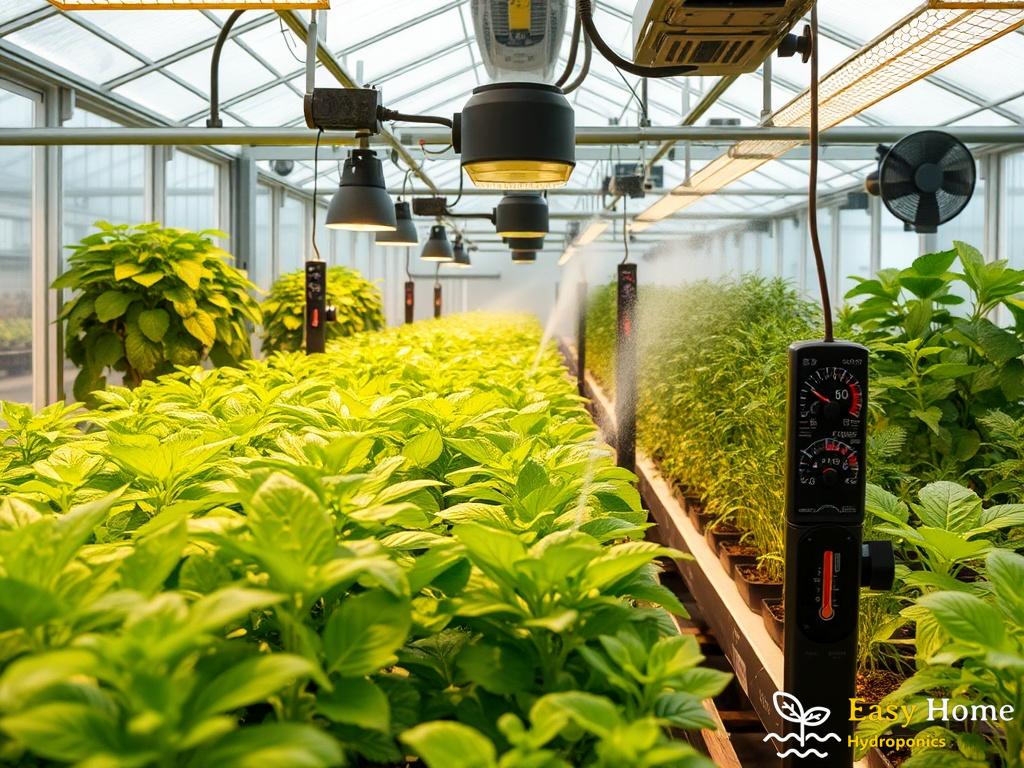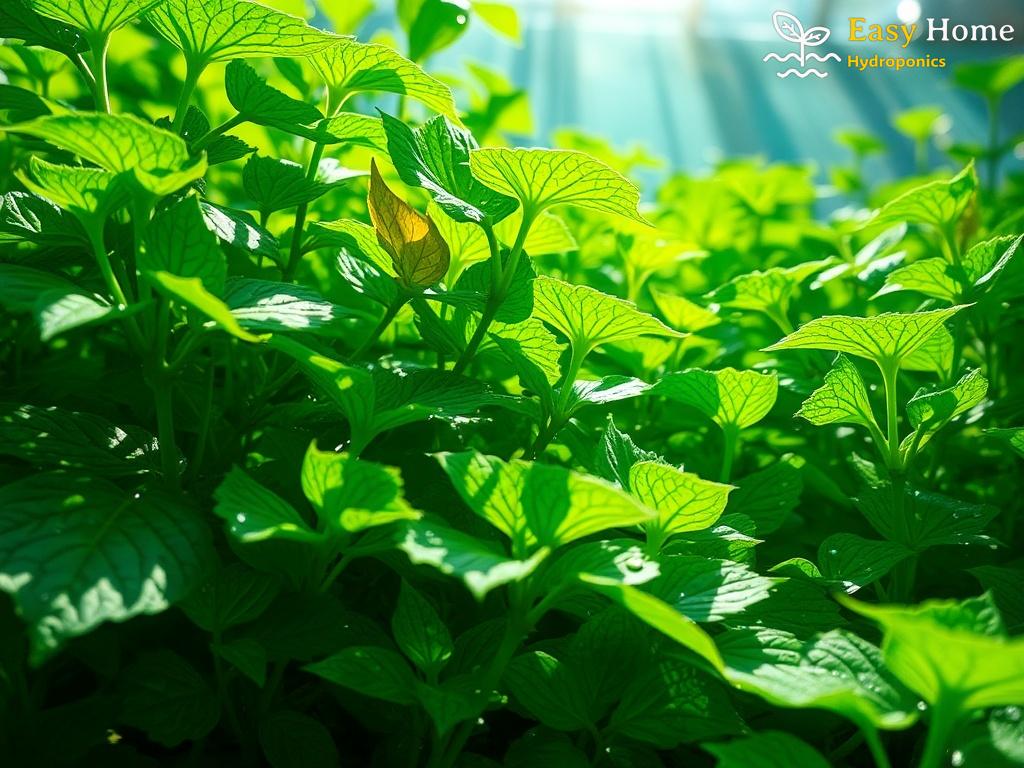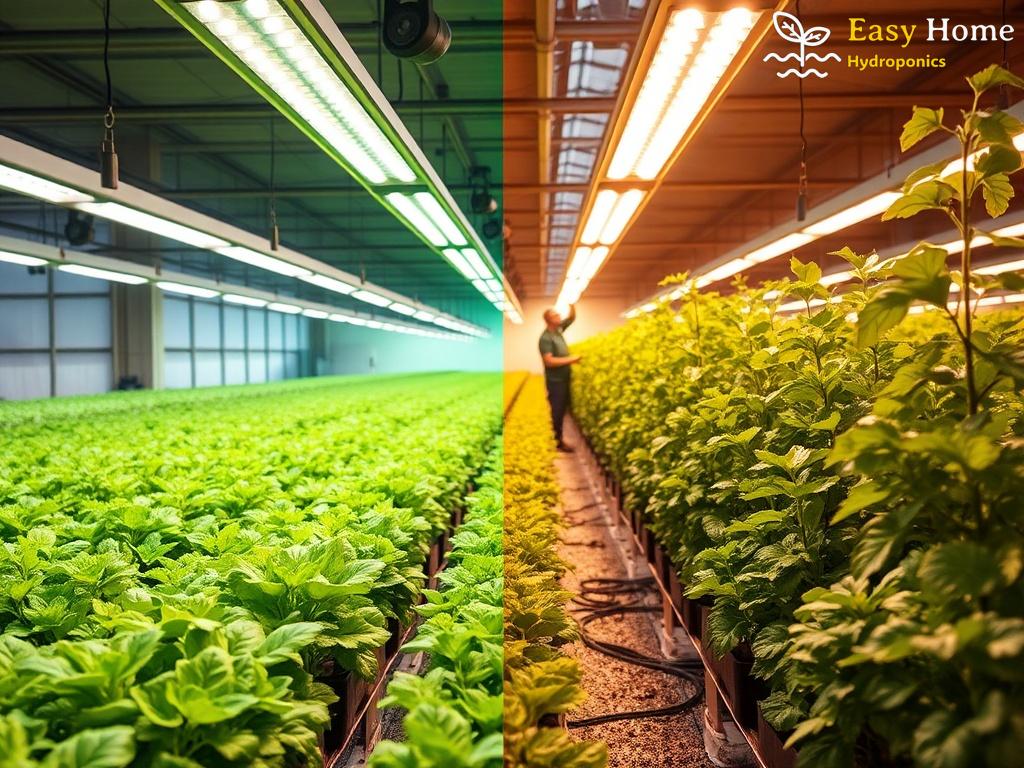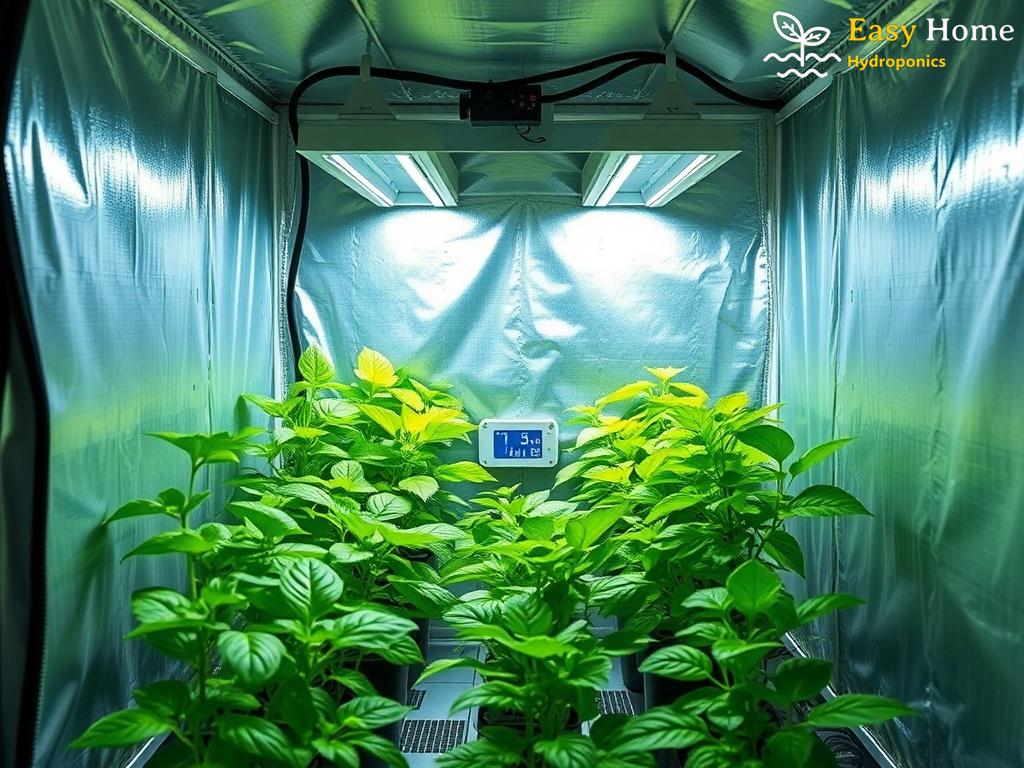The Dance of Light: Photosynthesis Unleashed
In the realm of hydroponics, light is not just a source of illumination; it is the very essence that fuels the growth of plants. Photosynthesis, the process through which plants convert light energy into chemical energy, takes center stage in this vibrant ecosystem. Without an adequate understanding of how light interacts with temperature, we cannot fully harness the potential of hydroponic systems for optimal plant growth.
Photosynthesis occurs primarily in the chloroplasts of plant cells, where chlorophyll captures light energy. This energy drives the conversion of carbon dioxide and water into glucose and oxygen, essential for plant health. However, the efficiency of this process is intricately linked to light intensity, quality, and duration—factors that can greatly vary in a hydroponic setup.
Not all light is created equal when it comes to plant growth. Different wavelengths of light play distinct roles in the photosynthetic process. For instance, blue light encourages vegetative growth, while red light is crucial during the flowering phase. Understanding these nuances allows hydroponic growers to tailor their light sources to meet the specific needs of their plants at various growth stages.
Moreover, the interaction between light quality and temperature can create a harmonious environment for photosynthesis. For example, while warmer temperatures can enhance photosynthesis, excessive heat can lead to stress, inhibiting growth. Thus, a delicate balance must be maintained to ensure that plants thrive.
| Light Color | Dominant Wavelength (nm) | Growth Impact |
|---|---|---|
| Blue | 400-500 | Promotes leaf and stem growth |
| Red | 600-700 | Encourages flowering and fruiting |
| Green | 500-600 | Less utilized, but aids in plant health |
Temperature is another critical component that interacts with light to influence photosynthesis. Plants have optimal temperature ranges for photosynthesis, typically between 20-30°C (68-86°F). Temperatures outside this range can slow down metabolic processes, affecting growth rates and yields.
For hydroponic systems, maintaining stable temperatures is vital. The combination of adequate light and optimal temperature creates an environment where plants can maximize their photosynthetic potential. Growers should monitor both factors closely, using tools such as thermometers and light meters to ensure conditions are just right.
Key Takeaways:
- Light quality affects the growth stage of plants.
- Temperature stability is crucial for optimal photosynthesis.
- Balancing light and temperature can enhance crop yields significantly.
Temperature Tactics: Optimizing Growth Cycles

In the intricate dance of hydroponics, temperature plays a pivotal role, influencing not just the metabolic activities of plants but also their overall health and productivity. By understanding the nuanced relationship between temperature and growth cycles, hydroponic growers can implement tactics that significantly enhance crop yields. As the seasons change, so too must the strategies employed in managing these vital environmental factors.
Each plant species exhibits unique temperature preferences that correspond to their growth stages. Identifying and maintaining these optimal ranges allows for better photosynthesis and growth rates. The following table outlines the temperature preferences for various growth stages:
| Growth Stage | Optimal Temperature (°C) | Impact on Growth |
|---|---|---|
| Seedling | 22-25 | Promotes strong root development |
| Vegetative | 20-28 | Enhances leaf and stem growth |
| Flowering | 18-26 | Encourages fruit and flower production |
To harness the full potential of temperature management, growers can adopt several strategies. Here’s a concise list of effective tactics for creating an ideal hydroponic environment:
- Adjusting Airflow: Proper ventilation helps maintain temperature stability and prevents heat buildup.
- Utilizing Thermal Mass: Incorporating materials that retain heat can buffer temperature fluctuations.
- Employing Climate Control Systems: Automated systems can regulate temperature, ensuring optimal conditions around the clock.
- Monitoring Humidity Levels: High humidity can affect temperature perception, so maintaining it within optimal ranges is essential.
By implementing these tactics, hydroponic enthusiasts can create an environment where plants not only survive but thrive, maximizing their natural growth cycles.
Spectrum Matters: Choosing the Right Grow Lights
In the complex world of hydroponics, the selection of grow lights is not a mere afterthought but a crucial decision that can dictate the success of an entire crop cycle. The spectrum of light that plants receive directly influences their growth patterns, photosynthetic efficiency, and ultimately, their yields. With various types of grow lights available, understanding how to choose the right spectrum becomes essential for growers aiming for exceptional results.
When it comes to plant growth, the wavelengths of light play a fundamental role. Each color in the light spectrum has its own unique impact on plant physiology. For instance, blue light encourages robust vegetative growth, making it an excellent choice during the early stages of plant development. Conversely, red light becomes increasingly important as plants transition into their flowering phase, promoting the production of blooms and fruits. However, the importance of light quality extends beyond just these two colors.
Furthermore, other wavelengths, such as far-red and ultraviolet light, also contribute to different physiological responses in plants, influencing processes like photomorphogenesis and stress responses. Choosing the right combination of light spectra allows hydroponic growers to mimic natural sunlight conditions, optimizing photosynthesis and growth.
As you embark on the journey of selecting grow lights, consider the following key factors that can guide your decision:
- Plant Type: Different plants have specific light requirements, so understanding your crops is vital for selecting the right spectrum.
- Growth Stage: Tailoring light to the growth stage of your plants can enhance their development and yield.
- Light Intensity: Ensure that the intensity of your grow lights matches the needs of your plants; too much light can cause stress, while too little can stunt growth.
- Energy Efficiency: Opt for energy-efficient lighting options that provide the necessary spectrum without incurring high electricity costs.
By carefully evaluating these aspects, hydroponic growers can make informed choices that not only support plant health but also enhance productivity.
Heat Management: Keeping It Cool Under Pressure
In the delicate world of hydroponics, where every element plays a crucial role in plant development, managing heat becomes imperative. As light intensity increases, so can the temperature, creating a scenario where plants can easily become stressed. Effective heat management strategies not only safeguard plant health but also optimize growth and yield. Here’s how you can keep your hydroponic environment cool and productive.
When temperatures soar beyond the optimal ranges, plants can suffer severe consequences. Excessive heat can lead to wilting, reduced photosynthesis, and even plant death if left unchecked. Moreover, high temperatures can exacerbate the effects of light stress, leading to a rapid decline in crop quality. Understanding the signs of heat stress is essential for growers aiming to maintain a thriving hydroponic system.
To mitigate the effects of heat and maintain an ideal environment, hydroponic growers can implement several innovative cooling techniques. Here are some effective methods to consider:
- Evaporative Cooling: Utilize water features or misting systems to cool the air through evaporation, providing a natural cooling effect.
- Reflective Materials: Employ reflective coverings for your grow area to minimize heat absorption and maximize light efficiency.
- Shade Cloths: Use shade cloths during the hottest part of the day to filter excess light and reduce heat build-up.
- Hydronic Cooling Systems: Implement systems that circulate chilled water through pipes in the growing area to absorb excess heat.
- Strategic Plant Placement: Position taller plants to provide shade for smaller, heat-sensitive varieties, creating a microclimate within the grow space.
By integrating these cooling strategies into your hydroponic system, you can effectively combat the challenges posed by rising temperatures.
Continuous monitoring of temperature and humidity is critical in maintaining ideal conditions for hydroponic plants. Utilizing advanced sensors and automated systems can help growers make real-time adjustments, ensuring that plants receive the perfect balance of light and temperature. Regular assessments not only aid in identifying potential heat issues before they escalate but also foster a more resilient growing environment.
Timing is Everything: Light and Temperature Rhythms
In the captivating world of hydroponics, the interplay between light and temperature transcends mere environmental factors; it becomes the very beat that guides plant development. Just as a symphony relies on precise timing to create harmonious melodies, plants thrive when exposed to carefully orchestrated rhythms of light and temperature. Understanding these cycles is essential for hydroponic enthusiasts who aspire to cultivate robust crops with optimal yields.
Plants exhibit distinct photoperiodic responses to light and temperature, meaning they react differently based on the duration and intensity of exposure. This relationship is not static but dynamic, fluctuating with the time of day and season. By attuning ourselves to these rhythms, we can enhance the growth cycles of our plants, propelling them toward their full potential.
The concept of circadian rhythms—internal biological clocks that dictate physiological processes—plays a pivotal role in plant growth. These rhythms influence not just when plants photosynthesize but also when they absorb nutrients and water. For instance, during the day, plants favor light absorption and photosynthesis, while at night, they shift focus to respiration and nutrient uptake. This daily cycle necessitates a harmonious balance between light and temperature for optimal performance.
By synchronizing light schedules with temperature adjustments, growers can align plant activities with their natural rhythms. For example, increasing temperature slightly during daylight hours can enhance photosynthetic rates, while allowing temperatures to drop at night can simulate natural conditions, encouraging robust root development and nutrient absorption. This interplay can significantly optimize growth and yield.
As the seasons transform, so too must the approach to managing light and temperature in hydroponic systems. Different growth stages and seasonal changes demand tailored strategies to ensure plants receive the optimal conditions they require. For instance, in the spring and summer months, longer days and increased light intensity can be leveraged to promote rapid vegetative growth, while in the fall and winter, adjusting light duration to mimic shorter days can encourage flowering and fruiting in certain species.
This adaptability extends beyond just light management; temperature control must also be adjusted accordingly. Warmer temperatures during longer days can enhance metabolic processes, while cooler nights are essential for maintaining plant health. A well-timed balance between light and temperature can lead to significant improvements in crop performance, allowing hydroponic growers to maximize their harvests.
| Growth Stage | Optimal Light Duration (hours) | Recommended Temperature (°C) |
|---|---|---|
| Seedling | 16-18 | 22-25 |
| Vegetative | 18-20 | 20-28 |
| Flowering | 12-14 | 18-26 |
By understanding the interconnectedness of light and temperature rhythms, hydroponic growers can create an environment that not only mirrors nature but also amplifies plant performance. Such meticulous attention to timing can transform hydroponic systems from simple cultivation setups into thriving ecosystems, where plants flourish and yield bountiful harvests.




